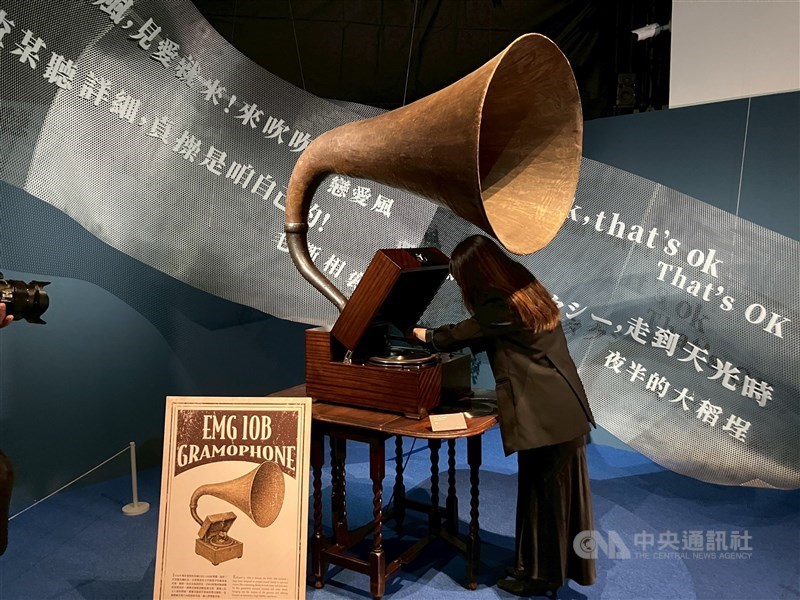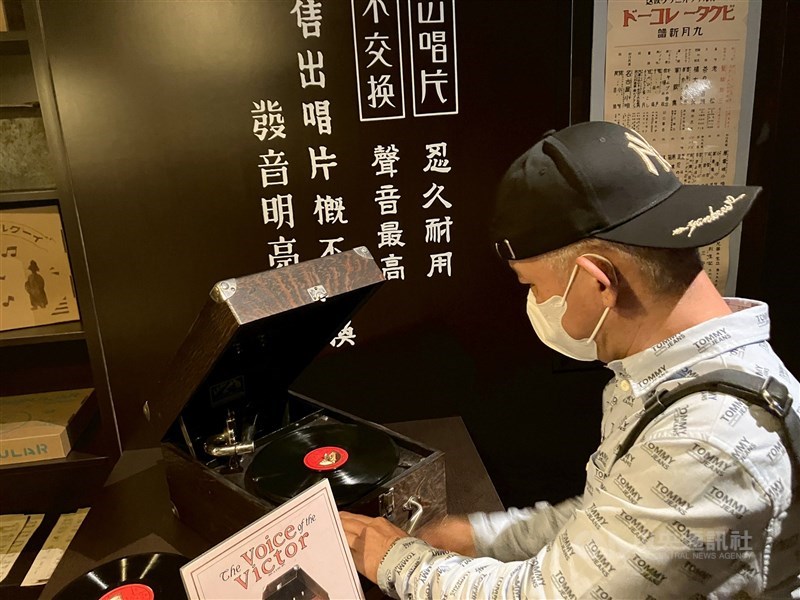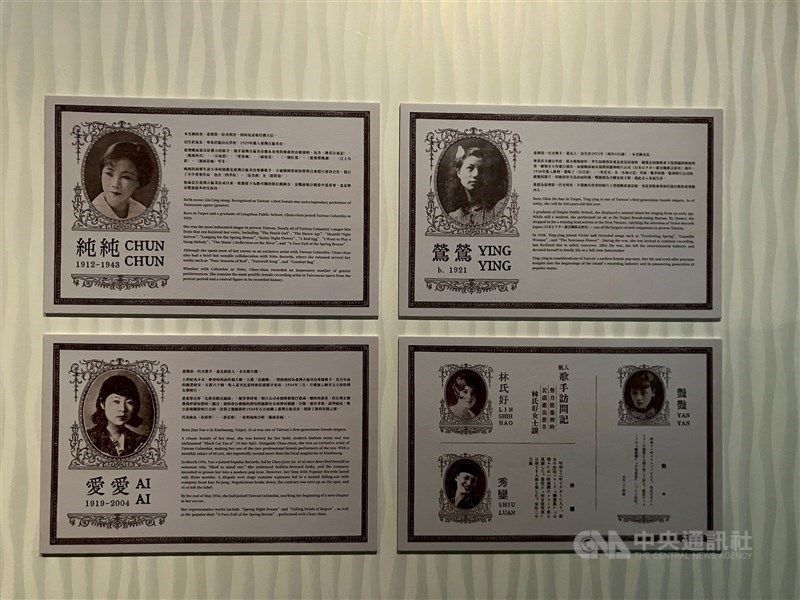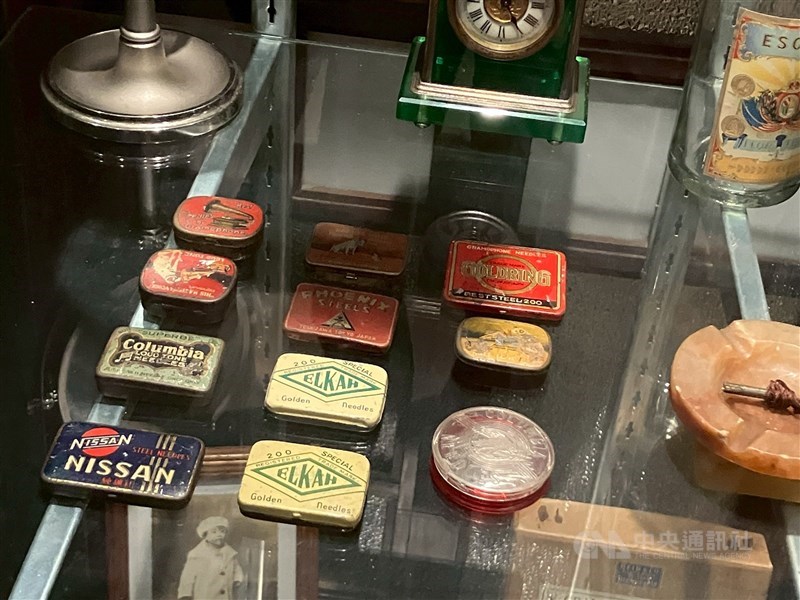
Taipei, May 23 (CNA) An exhibition that traces the roots of Taiwan's pop music, featuring three never-released Taiwanese music gems, will take visitors on a journey back in time to the 1930s while Taiwan was still under Japanese colonial rule.
"Modern Era: The Dawn of Pop Music," a Chinese-English show hosted by the Taipei Music Center, opens Saturday and runs until Aug. 10 on the 2nd floor of the center's Cultural Cube.
Wang Ying-fen (王櫻芬), the exhibition's chief consultant, said the show represented the best of private collections of its curators, who generously loaned their precious collectibles to make the show a truly unique experience that people are unlikely to find elsewhere.

Among the exhibits are various types of vintage gramophones and phonographs, as well as colorful metal boxes used to store styli for playing 78-rpm shellac records.
Notably, Wang, a distinguished professor at National Taiwan University Graduate Institute of Musicology, said visitors will have the opportunity to listen to three previously unreleased songs.
One is a rare recording by the late Teng Yu-hsien (鄧雨賢), often hailed as "the father of Taiwanese popular songs," singing his original composition "Song By The Sea" (臨海曲).

The other two are "A Maiden's Lament" (閨女嘆) by Lin Shih-hao (林氏好), known as "Taiwan's first soprano," and "Wife of a Military Laborer" (軍夫之妻) by Chun-chun (純純), a popular female singer in the 1930s.
In addition to the three tracks, visitors will also get to listen to "Brazil Tea Shop (巴西喫茶店)," whose words were written by influential Taiwanese lyricist Chen Jyun-yu (陳君玉) 90 years ago but had never been set to music until now.

Taipei Music Center Chairperson Kay Huang (黃韻玲) brings the song fully up to date with a stirring melody and a Latin American beat, providing a backdrop on which Golden Melody Award best male Taiwanese singer Henry Hsu (許富凱) laid his vocals.
The show also features renderings of tabloids from the 1930s, printed in Chinese and English, that have love stories behind the hit songs and profiles of some of the hottest female singers at the time, offering insights into the songs and the entertainment industry in pre-war Taiwan.
Around the corner, visitors are greeted by a long projection screen, showing people dressed in kimonos displaying dance moves popular at the time.

Back then, Wang explained, each song was choreographed, and records came with "dance scores" that instructed people on how to dance to the music.
"[But] I think that we should not just focus on the rhythms, the harmonies and the melodies of the music," Huang said at a news conference to announce the exhibition.
"The bottom line is we should know our roots. And I hope that this exhibition will remind us all of our roots, no matter how much trends and creations have evolved," he said.
Tickets are NT$200 (US$6.67), NT$150 for students and residents of Neihu and Nangang districts, NT$100 for people aged 65 and above, and free for people with a disability certificate.
- Politics
KMT Legislator Lo Chih-chiang joins race for party chair
08/25/2025 09:37 PM - Sports
Team Taiwan names coaches for 2026 World Baseball Classic
08/25/2025 09:31 PM - Society
Chunghwa Post suspends small parcel services to U.S. due to tariffs
08/25/2025 08:37 PM - Cross-Strait
Taiwan's Coast Guard shadows trespassing Chinese ships off Kinmen
08/25/2025 07:38 PM - Business
NDC calls for deeper Taiwan-Japan collaboration on innovation
08/25/2025 07:30 PM